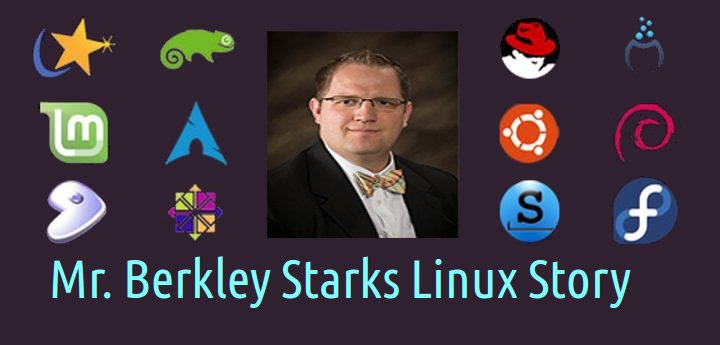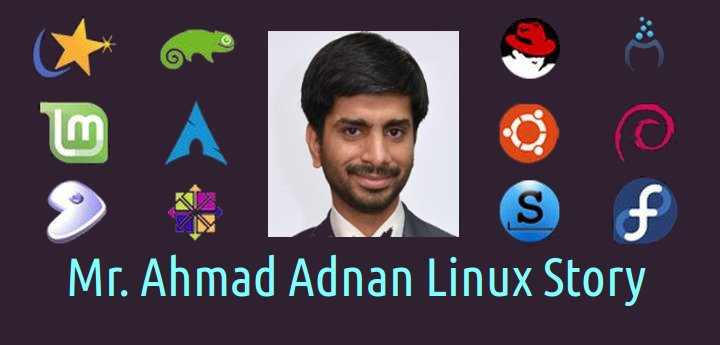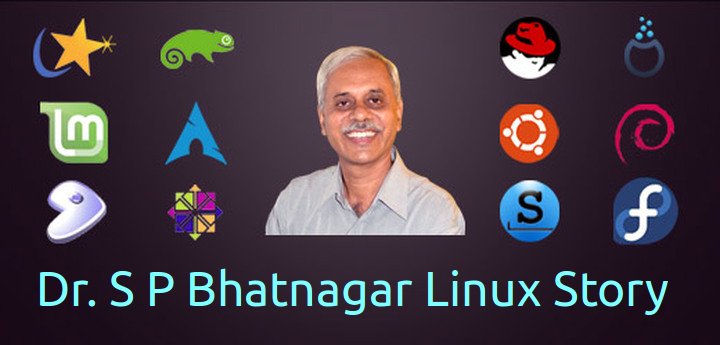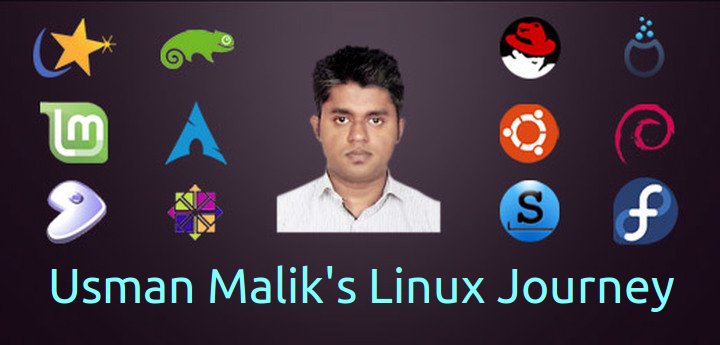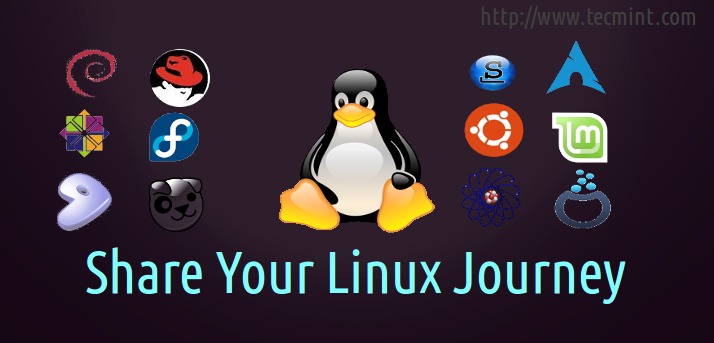Yet, another interesting story of Mr. Stuart J Mackintosh, who shared his real Linux story in his own words, must read…
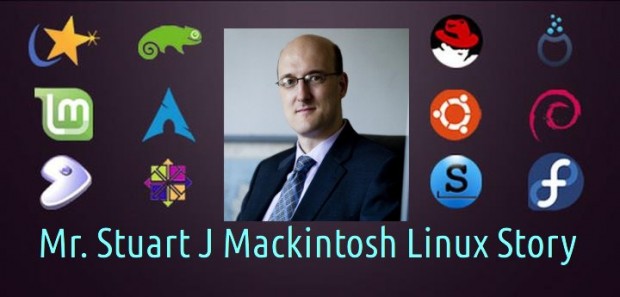
About Stuart J Mackintosh (SJM)
Stuart J Mackintosh (SJM) is the MD of Open Source specialist company, OpusVL, which provides customized business management solutions, support and infrastructure. He is active in the promotion of practical methods to implement Open Source across both public and private sectors.
Prior to founding OpusVL, SJM entered the computer industry through his electronics background; early roles including the repair of IBM-compatible PC systems and working with Amstrad PC systems. After moving into software in the mid 90s, SJM was responsible for network architecture and diagnosis, and set up an ISP that was acquired by OpusVL. This was followed by the creation of a successful and industry-leading e-commerce solution.
In the late 90’s, he prototyped and developed numerous systems that are only now being widely used in the marketplace, including visitor analytics, journey logging, meta data searching, card payment integration, high performance/high availability systems and virtualisation technology.
I am answering to the following questions asked by TecMint:
When and Where you heard about Linux and How you encountered Linux?
My background was electronics and hardware, and with a role in an IT hardware company, was assigned the responsibility of managing the internal network during the early 90’s. The network was based on 10-base-2 coax and the servers were Novell Netware 2 and 3.
To meet customer demand, I developed and operated Wildcat BBS, faxback and telephone interfaces to enable better customer interaction. Much of this was managed through advanced batch files.
With the emergence of online connected systems AOL, MSN etc, the world-wide-web started to became of interest to forward-thinking and technologically aware business people and I had to find a way to address this new demand. Initially, I installed the freeware add-on of Microsoft Internet Information Services (IIS) V1.0 on to a Windows NT 3.51 platform which enabled the deployment of a brochure website . This technology was recommended by my peers and Microsoft was seen as the leading solution with the up and coming Windows 95.
With years of Novell experience, I was used to setting up systems once and for them to work as expected in to perpetuity, with exception of hardware and capacity constraints. However, my experience with IIS did not provide the predictability that I was used to. After experimenting with early NT4, I concluded that the Microsoft suite of software was unable to provide a solution suitable for my needs so started looking for alternatives.
A sysadmin at my connectivity provider presented me with a gold, un-labelled CD and suggested that it would provide the tools that would enable me to build what I needed. Coming from the IT world, I naturally asked “Where is the license?” the answer was simply, there is none. I then asked “where is the documentation?” and received the same answer.
With a little coaching and understanding how my batch file experience translated to “sh”, I was rapidly able to install replacement network routers, web servers, file stores and other utilities. One of the most significant of these utilities was an IVR platform which enabled very powerful call routing linked with a MySQL database and integrated with the web database.
Within a couple of years, I had fully committed to Linux as it enabled me to achieve whatever I chose, without the complex licensing challenges hampering almost every corner of the growing IT industry and the instabilities that almost everyone else became conditioned to accept over the coming years.
Following these successes, I started a company in 1999 with the remit of implementing Linux & Open Source in to businesses. Through this business, I have been able to achieve more than most big teams with the largest budgets have achieved, delivered robust solutions years ahead of their time, all at a fraction of the cost and time than one would expect.
The first Distribution you tried, the difficulty you faced and the things you learned.
The disc contained Slackware 2. One needed persistence and tenacity to realise the rewards available to the Linux user. Examples of this included having to recompile the kernel when the jumpers were changed on an Ethernet card. This compile could often take all weekend on a 100Mhz CPU, just to find that the settings conflicted and the process must be restarted.
The luxury of a graphical workstation was a feat for the brave, trying to get the dependencies and a clean build swallowed up weekend after weekend. When Redhat 3.0.3 became available, including the RPM package management system, software could be installed on a whim, and productivity was improved by a magnitude. Compilation was still required on occasion, but at least the compiler could be installed with ease.
What Linux meant for you and where it stands now?
It enabled me to achieve what I wanted, without the unnecessary artificial burdens that the proprietary industry imposed. Freedom in it’s truest form. When the uninformed ask me who uses Linux, I point out that whenever they encounter technology that just works, does not need rebooting, does not need a support contract and generally has comparatively little or no cost, it is almost certainly Linux.
What you like/dislike about Linux?
I like that I can still do what I want, and I can pay for value added services when needed. It concerns me that now the wider world has pivoted from proprietary software to Open Source and Linux, that some of the diseased ways of working will become disguised and bring disrepute to Linux.
What was your favourite distribution and what it is now. Let us know the journey.
When Redhat moved to Fedora, I moved to Debian for anything that a User does not sit directly in front of. It is very stable and provides appropriate tools. For my laptop and desktop, I now use Mint as it provides the best mix of up to date apps without the bloat and un-features that some of the distro’s are now feeling compelled to introduce.
Best/worst Desktop Environment you ever used
The best for me is XFCE without doubt, it is flexible and enables me to be very productive.
However, there is no worst, just levels of appropriateness. I have used fwm95, which is a configuration inspired by the Windows 95 layout, but really was only a graphical menu. Motif was ugly, but worked well on low resources. At the time, I really only wanted to run Netscape Navigator & Star Office, and it provided this flawlessly.
How you encounter with Linux command Line and what was your thought.
After using batch files, I thought “Wow, can it really be this powerful…”
Say one thing that you would like to change to Linux or a particular Distro, if permitted?
There is a whole load of things, but I am sure they are on the roadmap and for what I pay for it, I cannot expect any more. Linux is excellent, designed by the need of the industry and now a consideration for almost every technology decision across the globe.
What is the brightest/darkest side of Linux, according to you?
It is open and just represents the human nature that sits behind it. Any darkness comes from dark minds, not dark software.
Tecmint Community is sincerely very thankful to Mr. Stuart J Mackintosh for sharing his real life true Linux journey with us. If you too have such kind of interesting story, do share with us, which will serve as an inspiration to millions of online readers.
Note: The best Linux story will get an award from Tecmint, based upon the number of views and considering other few criteria, on monthly basis.


